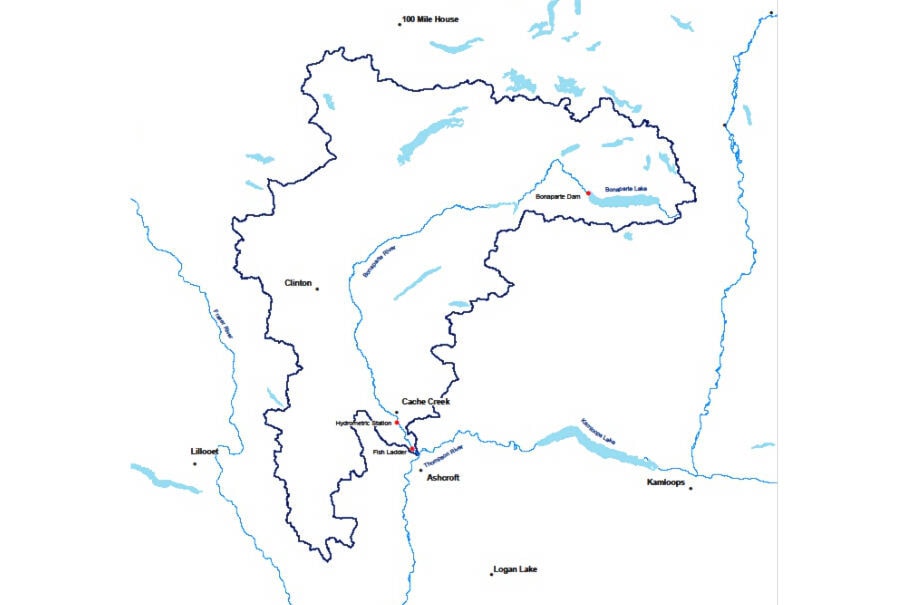By Wendy Coomber
Representatives of the many groups concerned about the Bonaparte River and the effects of wildfires and floods on it gathered for the annual general meeting of the Bonaparte Watershed Stewardship Society (BWSS) on Feb. 23 in the Bonaparte Band Hall.
Approximately 30 people attended to talk about mitigation work along the river, fire risk prevention in the area, emergency preparedness, and, of course, the state of the salmon in the river.
Mike Simpson, formerly of the Fraser Basin Council and now working as a consultant, spoke about the Clinton and Area Roundtable that he facilitates. The roundtable is one of many around the province and includes the area from Loon Lake north to 70 Mile House and west to Big Bar Lake.
The roundtable was formed in February 2020 and “brings together anyone and everyone who has an interest in wildfires,” said Simpson. The roundtable facilitates the coordination and communication of organizations responsible for wildfire preparedness and risk reduction in the region, with involvement of local government, First Nations, volunteer fire departments/brigades, ranchers, and others in the forest industry.
Simpson said that on May 16, he and Alan Westhaver will be touring areas burned by recent wildfires around Clinton, and later that evening Westhaver would give a public presentation. Westhaver is one of the founders of the FireSmart program and investigated the wildfires in Fort McMurray and Lytton. Simpson said the group is working on a Community Wildfire Resiliency Plan, which will offer a fundamental first step in assessing and understanding the wildfire threat and risk within a community.
Other representatives at the meeting — Patrick Harry from the Secwepemc Health Caucus, Mike Knauff of TNRD Emergency Services, and Trevor Pratt and Steve Mulholland from Emergency Management and Climate Readiness (a new name for the old Emergency Management BC) — all talked about their concerns for the river and the disasters that affect it.
Pratt suggested that there could be more river and snow level monitoring in the area, which provides crucial data for determining annual flooding hazards, and that the provincial government might be open to discussing the need for more monitoring with the BWSS as a long-standing society whose sole focus is on the river and its watershed as well as the many salmon species that use the river to spawn in. Several members expressed an interest in lobbying for more river and snow data collection.
A quick report on the Bonaparte Fishway was given by Jeremy Sterling of the Secwepemc Fisheries Commission. The fishway, or fish ladder, was repaired in 2019, two years after it suffered catastrophic damage as a result of the 2017 wildfire. Sterling said the numbers of salmon and steelhead using the fishway last year were higher than the previous years since the fishway was repaired, but qualified that by saying low water and equipment malfunctions may have skewed the numbers slightly. He said they would be looking for funding to fix the equipment and possibly do some more work on the fishway.
Elections for the executive were carried out before the meeting adjourned. Last year’s executive was returned to their chairs: Chair Al Midgley, Vice Chair Wendy Coomber, Secretary Brenda Antoine, and Treasurer Tom Pitt.
editorial@accjournal.ca
Like us on Facebook and follow us on Twitter
